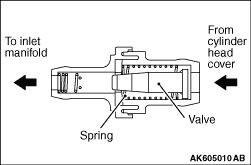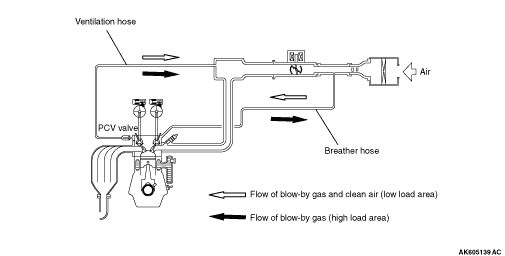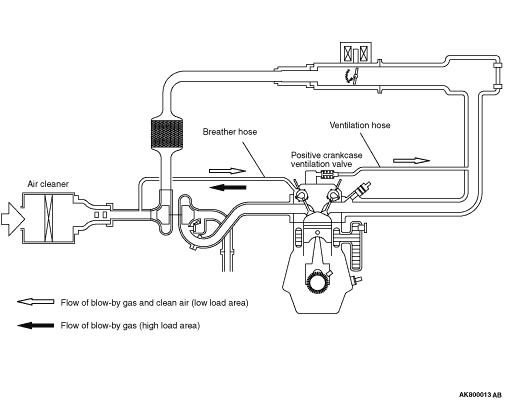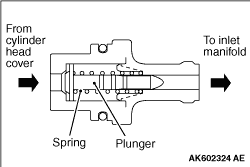



POSITIVE CRANKCASE VENTILATION (PCV) VALVE |
<4A91> |
 |
PCV valve lifts the valve according to negative pressure at the inlet manifold to create
appropriate ventilation for the crankcase. |
<4B10, 4B11-Turbo> |
 |
PCV valve lifts the plunger according to negative pressure at the inlet manifold to create
appropriate ventilation for the crankcase. |